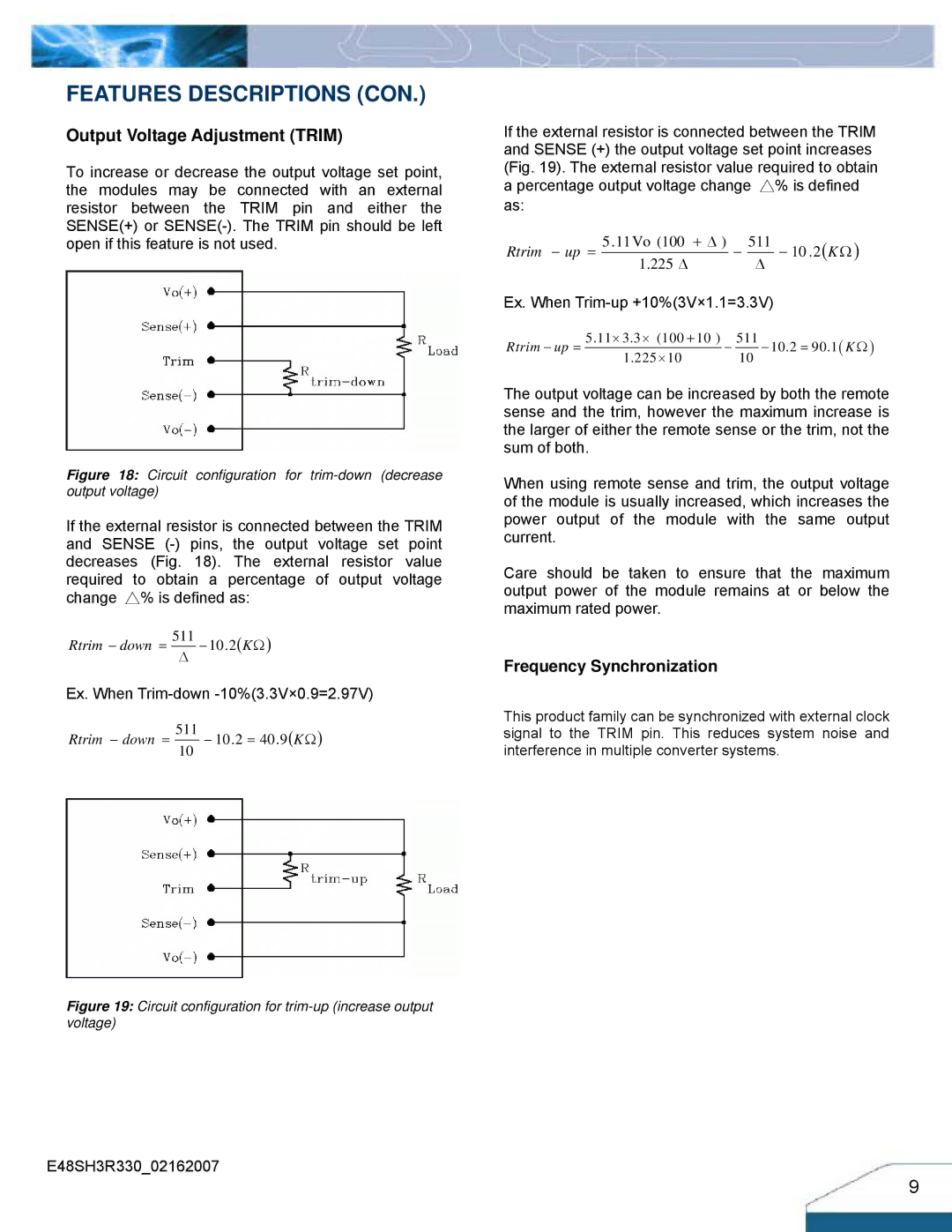
FEATURES DESCRIPTIONS (CON.)
Output Voltage Adjustment (TRIM)
To increase or decrease the output voltage set point, the modules may be connected with an external resistor between the TRIM pin and either the SENSE(+) or
Figure 18: Circuit configuration for trim-down (decrease output voltage)
If the external resistor is connected between the TRIM and SENSE
Rtrim − down = 511∆ − 10.2(KΩ )
Ex. When
Rtrim − down = 51110 − 10.2 = 40.9(KΩ )
Figure 19: Circuit configuration for trim-up (increase output voltage)
If the external resistor is connected between the TRIM and SENSE (+) the output voltage set point increases (Fig. 19). The external resistor value required to obtain a percentage output voltage change △% is defined as:
Rtrim − up = | 5.11Vo (100 + ∆ ) |
| − | 511 | − 10 .2(K Ω ) | |
1.225 ∆ | ∆ | |||||
|
|
| ||||
Ex. When |
| |||||
Rtrim − up = 5.11⋅ 3.3 ⋅ (100 + 10 ) − | 511 − 10.2 = 90.1( K Ω ) | |||||
| 1.225 ⋅10 | 10 |
| |||
The output voltage can be increased by both the remote sense and the trim, however the maximum increase is the larger of either the remote sense or the trim, not the sum of both.
When using remote sense and trim, the output voltage of the module is usually increased, which increases the power output of the module with the same output current.
Care should be taken to ensure that the maximum output power of the module remains at or below the maximum rated power.
Frequency Synchronization
This product family can be synchronized with external clock signal to the TRIM pin. This reduces system noise and interference in multiple converter systems.
E48SH3R330_02162007
9
